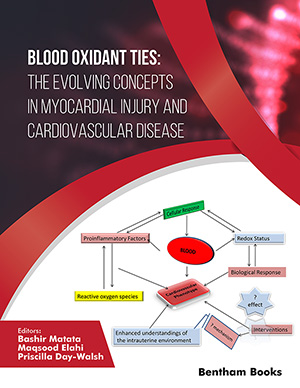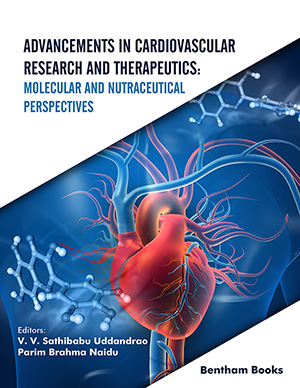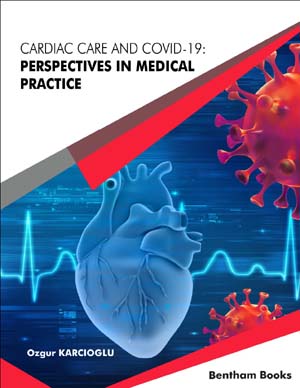
Abstract
Background: Pericardial Decompression Syndrome (PDS) is defined as paradoxical hemodynamic deterioration and/or pulmonary edema, commonly associated with ventricular dysfunction. This phenomenon was first described by Vandyke in 1983. PDS is a rare but formidable complication of pericardiocentesis, which, if not managed appropriately, is fatal. PDS, as an entity, has discrete literature; this review is to understand its epidemiology, presentation, and management.
Methodology: Medline, Science Direct and Google Scholar databases were utilized to do a systemic literature search. PRISMA protocol was employed. Abstracts, case reports, case series and clinical studies were identified from 1983 to 2019. A total of 6508 articles were reviewed, out of which, 210 were short-listed, and after removal of duplicates, 49 manuscripts were included in this review. For statistical analysis, patient data was tabulated in SPSS version 20. Cases were divided into two categories surgical and percutaneous groups. t-test was conducted for continuous variable and chi-square test was conducted for categorical data used for analysis.
Results: A total of 42 full-length case reports, 2 poster abstracts, 3 case series of 2 patients, 1 case series of 4 patients and 1 case series of 5 patients were included in the study. A total of 59 cases were included in this manuscript. Our data had 45.8% (n=27) males and 54.2% (n=32) females. The mean age of patients was 48.04 ± 17 years. Pericardiocentesis was performed in 52.5% (n=31) cases, and pericardiostomy was performed in 45.8% (n=27). The most common identifiable cause of pericardial effusion was found to be malignancy in 35.6% (n=21). Twenty-three 23 cases reported pre-procedural ejection fraction, which ranged from 20%-75% with a mean of 55.8 ± 14.6%, while 26 cases reported post-procedural ejection fraction which ranged from 10%-65% with a mean of 30% ± 15.1%. Data was further divided into two categories, namely, pericardiocentesis and pericardiostomy. The outcome as death was significant in the pericardiostomy arm with a p-value of < 0.00. The use of inotropic agents for the treatment of PDS was more common in needle pericardiocentesis with a p-value of 0.04. Lastly, the computed recovery time did not yield any significance with a p-value of 0.275.
Conclusion: Pericardial decompression syndrome is a rare condition with high mortality. Operators performing pericardial drainage should be aware of this complication following drainage of cardiac tamponade, since early recognition and expeditious supportive care are the only therapeutic modalities available for adequate management of this complication.
Keywords: Pericardial decompression syndrome, pulmonary edema, ventricular dysfunction, pericardiocentesis, pericardial drainage, cardiac tamponade.
[http://dx.doi.org/10.1056/NEJM198309083091006] [PMID: 6877287]
[http://dx.doi.org/10.1111/echo.13229] [PMID: 27046800]
[PMID: 23109775]
[http://dx.doi.org/10.1378/chest.124.1.242] [PMID: 12853529]
[http://dx.doi.org/10.1016/j.athoracsur.2009.11.073] [PMID: 20417826]
[http://dx.doi.org/10.15171/jcvtr.2014.04] [PMID: 25859311]
[http://dx.doi.org/10.1016/S0022-5223(97)70423-9] [PMID: 9011698]
[http://dx.doi.org/10.1016/S0828-282X(07)70887-5] [PMID: 18060102]
[http://dx.doi.org/10.1136/bcr-2015-211550] [PMID: 27251601]
[http://dx.doi.org/10.1016/j.ijcard.2016.03.158] [PMID: 27054499]
[http://dx.doi.org/10.7326/0003-4819-119-1-199307010-00007] [PMID: 8498762]
[http://dx.doi.org/10.1253/jcj.59.55] [PMID: 7752446]
[http://dx.doi.org/10.1016/S0003-4975(98)01143-6] [PMID: 10086556]
[http://dx.doi.org/10.1532/hsf.1227]
[http://dx.doi.org/10.1213/XAA.0000000000000120] [PMID: 25774750]
[http://dx.doi.org/10.1016/j.ijcard.2014.11.077] [PMID: 25465843]
[http://dx.doi.org/10.1016/j.ijscr.2016.09.045] [PMID: 27710875]
[http://dx.doi.org/10.5578/khj.10324]
[http://dx.doi.org/10.1532/HSF98.20111028] [PMID: 21997655]
[http://dx.doi.org/10.1016/j.case.2018.02.001] [PMID: 30128413]
[http://dx.doi.org/10.1016/S1053-0770(98)90242-7] [PMID: 9854667]
[http://dx.doi.org/10.1016/S0167-5273(97)02918-5] [PMID: 9158180]
[http://dx.doi.org/10.1016/S0012-3692(15)37999-X] [PMID: 16002982]
[http://dx.doi.org/10.1016/j.ejheart.2005.05.012] [PMID: 16111917]
[http://dx.doi.org/10.1136/bcr.04.2011.4117] [PMID: 22679149]
[http://dx.doi.org/10.1177/0003319706291147] [PMID: 17875962]
[http://dx.doi.org/10.1186/s12947-015-0026-3] [PMID: 26179174]
[http://dx.doi.org/10.1007/BF03018312] [PMID: 15128635]
[PMID: 29731332]
[http://dx.doi.org/10.1378/chest.94.4.869] [PMID: 3168582]
[http://dx.doi.org/10.1016/j.athoracsur.2009.02.001] [PMID: 19632445]
[http://dx.doi.org/10.1016/j.chest.2017.08.305]
[http://dx.doi.org/10.1378/chest.86.4.647] [PMID: 6478913]
[http://dx.doi.org/10.1097/00003246-199110000-00016] [PMID: 1914491]
[http://dx.doi.org/10.1002/jcu.22369] [PMID: 27219864]
[http://dx.doi.org/10.1016/S0003-4975(10)62862-7] [PMID: 2774723]
[PMID: 10197666] [http://dx.doi.org/10.1016/s0003-4975(98)01192-8]
[http://dx.doi.org/10.1016/j.jtcvs.2010.09.015] [PMID: 21092993]
[http://dx.doi.org/10.1016/j.amjcard.2017.06.003] [PMID: 28739031]
[http://dx.doi.org/10.7326/0003-4819-120-5-199403010-00030]
[http://dx.doi.org/10.1016/S0828-282X(08)70673-1] [PMID: 18787727]
[http://dx.doi.org/10.2459/JCM.0b013e32833cdbf1] [PMID: 20625309]
[http://dx.doi.org/10.1177/2048872614557771] [PMID: 25406423]
[http://dx.doi.org/10.1016/S0735-1097(16)31053-1]
[PMID: 18984988]
[http://dx.doi.org/10.1056/NEJM198402093100615] [PMID: 6690972]
[http://dx.doi.org/10.1016/j.rmedc.2007.10.010]
[http://dx.doi.org/10.1002/clc.4960261209] [PMID: 14677814]
[http://dx.doi.org/10.1007/s10396-016-0738-5] [PMID: 27577563]
[http://dx.doi.org/10.1016/0002-9149(83)90088-7] [PMID: 6858905]
[http://dx.doi.org/10.1213/00000539-199312000-00031] [PMID: 8250323]
[http://dx.doi.org/10.1378/chest.117.3.910] [PMID: 10713029]
[PMID: 7753651]
[http://dx.doi.org/10.1016/j.ihjccr.2019.04.001]
[http://dx.doi.org/10.1136/bcr.02.2011.3837] [PMID: 22689547]
[http://dx.doi.org/10.1016/j.ijscr.2013.02.002] [PMID: 23474977]
[http://dx.doi.org/10.1016/j.jccase.2015.06.005] [PMID: 30546577]
[http://dx.doi.org/10.1016/S0022-5223(95)70287-3] [PMID: 78773]



















